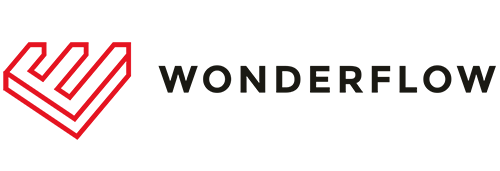With all the potential gains, you would think that integrating consumer feedback in product launches and continuous development is common practice. But despite the benefits, too many companies still ignore consumer feedback, struggle to make sense of it, or are stuck trying to build a scalable process. In this blog, we will share the best ways on how to use customer feedback in product development.
Let’s start with the benefits. Analyzing consumer feedback allows companies to meet their customers’ expectations more accurately and efficiently, resulting in an increased market share and customer loyalty. This approach saves costs as it allows companies to focus their resources on products that are more likely to be bought in the increasingly competitive global market, instead of wasting resources on a product that might end up not being successful. By integrating consumer feedback into the development process, this creates a successful and cost-saving dynamic between the consumers and producers.
Being responsive to customer feedback also brings companies closer to their target audience. This results in customer retention, stronger brand loyalty, and better engagement. Considering how costly and difficult it is to retain buyers nowadays, these benefits should not be underestimated.
How can customer feedback be implemented?
Customer feedback can be implemented in 5 main ways:
- Identify the features and functionalities of the greatest customers’ concern
- Uncover customers’ pain points
- Provide useful ideas for product improvements
- Highlight unpromising product innovation investments
- Bring forth the best feature of a product in marketing campaigns
By analyzing and implementing customer feedback, customers become part of the production phase in a company. This allows for companies to increase the quality of their products by applying positive and negative feedback from customers. Additionally, products that are most successful become apparent and allow for companies to shift their focus on what is most important, and discard products that are less successful. Through uncovering customer’s pain points, companies create a better relationship with their customer base as customers will feel understood and listened to which is essential for all businesses to be successful. Remember, the customer is king.
Some great examples of companies that implemented customer feedback into product development successfully are DHL and LEGO. To improve its supply chain, DHL engaged with its customers to co-create solutions that improved the delivery experience. That is how the Parcelcopter was born, a test drone delivery service that could change DHL’s service forever. After this solution has been integrated into the delivery chain, customer satisfaction exceeded 80%, while the on-time delivery performance reached 97% across the globe.
Similarly, LEGO quite possibly has the best example of how customer insights can be used for development. LEGO created a mini-site where its enthusiasts can easily submit their own designs. The projects that gather more than 10,000 votes from the community undergo LEGO review and are turned into new sets if the review is favorable. This process is not only limited to collected and analyzed customer feedback but allows for customers to be the complete designers of their products.
Read here how customer feedback saved a product launch of a major consumer electronics company in Europe. The company saved up to €500k in RnD costs and was able to recover and even exceed the predicted sales by 4% in the third quarter since the product launch.
Ways to collect customer feedback
Voice of the Customer (VOC) is an in-depth process of collecting data about the users’ expectations, preferences, and aversions. This can be collected through various methods such as surveys, ratings, and customer reviews.
Product feedback forms or surveys represent a quick way of gathering customer feedback. It is one of the most used methods in gathering data from customers and utilizes mostly open-ended questions to avoid bias. The upside of utilizing this method is that surveys can answer specific questions a company is targeting. Additionally, surveys or product feedback forms do not require a large number of resources. The downside of using this method is that even with open-ended questions, there is always an unavoidable bias in questions and many surveys are ineffective as most users do not fill out the forms.
Customer reviews are often dispersed among various different channels and e-commerce websites. This can discourage most businesses as collecting and analyzing this data can be a cumbersome process, taking up a lot of resources before being able to integrate it into the product development process. This is where automated AI data collection analysis provides the tools for this data to be implemented in a cost-efficient manner.
Technology such as natural language processing (NLP) is an AI-based technique that automatically interprets text, reaching the same accuracy as trained experts would. Being machine-based means it’s faster, more consistent, and in the long run more accurate, which makes NLP perfect to analyze feedback data. This eliminates the disadvantages gained by collecting and analyzing customer feedback. NLP allows you to perform various strategies including frequency of words, word grouping, and sentiment analysis. These all fall under the category of text analysis. This allows for the detection of the most recurrent and important data in customer feedback for clients.
Wonderflow has simplified this process for businesses as it offers the simplest solution to analyze any type of written feedback from hundreds of private and public channels, such as online reviews or contact center records. Wonderflow’s AI automatically unveils predictive insights in an easy-to-use dashboard, called the Wonderboard. Through this dashboard, business users are empowered to take the most impactful actions to grow the business by understanding what consumers think about their products and services, and what improvements will drive the best results. Take a look at the Wonderboard.
Are there any downsides to customer-driven development?
Implementing customer feedback into product development is essential, but it is important for companies to keep in mind that should not be the only focus. Let’s now focus on some downsides of implementing customer feedback in product development. Some customers are only interested in one brand and all their feedback neglects competitor’s products. Thus, not all feedback is 100% reliable or takes into consideration everything that’s of concern in product development. Product developers and designers should listen and integrate feedback, but that should not be the only factor taken into account in the development process.
Moreover, if no third parties are utilized in customer feedback data collection, democratizing innovation might slow down the production process. Gathering feedback without assistance is already a time-consuming task, and the more customers are involved, the longer it will take. Since time to market is essential to maintain relevance, brands need to find a balance between getting adequate feedback and launching on time.




